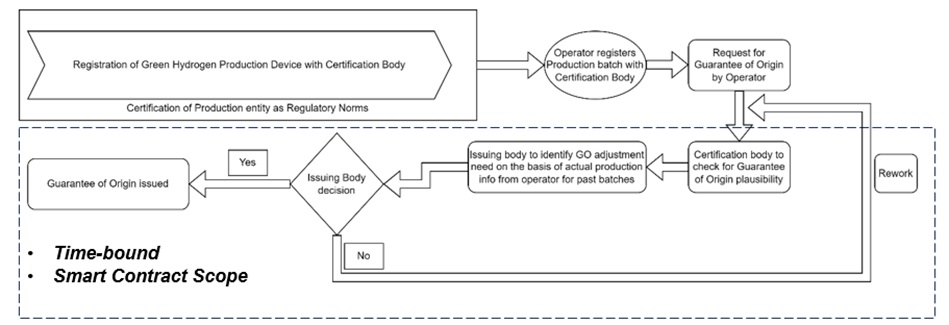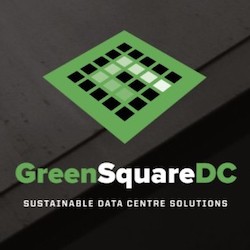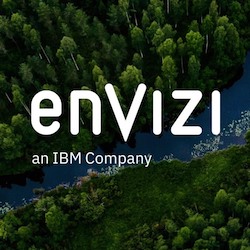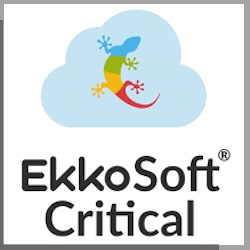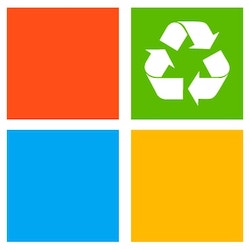Green hydrogen, produced using renewable energy sources, is a crucial element in achieving a sustainable energy future. However, verifying the green credentials of hydrogen throughout its complex supply chain remains a challenge. Blockchain technology, with its inherent transparency and immutability, offers a compelling solution for streamlining and securing the green hydrogen certification process.
In this paper, we discuss in detail the nature of hydrogen energy, challenges in the current state, and our opinion on how blockchain can solve current challenges and help in a tamper-free certification process thereby making Green Hydrogen an acceptable source of sustainable green energy.
Introduction
The health of our planet is deteriorating day by day. We have now entered ‘Global Boiling’, leaving global warming behind. With this, governmental pressure [1] in most countries is also increasing to switch to cleaner and greener sources of energy to meet the current and new energy demand. Enterprises can capitalize on economic benefits of switching to alternate energy sources with benefits including Production Tax Credits, Capital Expenditure Grants, R&D funding, Premium Pricing, Trade Streamlining, etc. More and more industries are now transitioning to alternate energy sources. Major factors including regulatory compliance, brand reputation, and even second/third order economic benefits, are driving this energy transition. To meet the targets established by the different climate change concerned agreements, the International Renewable Energy Agency estimates that 41% of global emissions reduction will be directly dependent on renewable energies, plus an additional 13% will depend on electrification [3].
To cater to this need of energy transition, new alternative green energy sources are required. Among the many options, one of the most promising options is Green Hydrogen Energy.
Green Hydrogen is hydrogen released when water is electrolyzed [2], wherein the electrolysis is driven by renewable energy source. Green Hydrogen is a fuel that is truly carbon-free and emits only water-vapors [2] in the atmosphere without any residue. In contrast to other forms of energy sources, it is now a serious contender to revolutionize the decarbonization effort. Manufacturing, energy, transportation & other similar carbon intensive sectors are increasingly turning to hydrogen to lower their carbon footprints because of escalating government requirements and investor pressures to decarbonize.
Green Hydrogen bridging the gap
Green Hydrogen, a fuel that is truly carbon-free, in contrast to other forms of energy sources, is now a serious contender to revolutionize the decarbonization and energy transition effort. Green Hydrogen is produced using water and renewable energy sources and is a potent tool in achieving the following sustainability goals:
- Carbon Emission reduction: Green Hydrogen production results in little to no carbon dioxide emission, helping to significantly reduce greenhouse gas emissions compared to conventional ways of producing hydrogen.
- Energy Storage: Green Hydrogen can be stored and used when renewable energy sources are not available, acting as an energy carrier that bridges the gap between intermittent renewable energy generation and consistent demand. If the situation arises that there is excess renewable energy in the grid (due to weather events, reduction in demand etc), then this excess energy can be used to generate Green Hydrogen and subsequently that excess energy can also be integrated into the energy grid.
- Abundance: Being extracted from water, it is available in abundance for us. This makes it a long-term sustainable option of clean energy.
- Versatility: Hydrogen fuel is very versatile in nature. It can be used for generating electricity, heating, and even transportation, potentially replacing fossil fuels across a utility company’s entire service portfolio.
Current challenges in using Green Hydrogen at large-scale
While Green Hydrogen seems to be a great source of sustainable energy in theory, in practice, it’s not so simple. there are certain challenges to commercializing this source of energy on a wider scale. One of the biggest challenges is certifying the hydrogen energy as truly green [4] [5]? For hydrogen energy to be called green, it must be proved and certified that the energy used from start until end in the process of generating, storing and supplying the hydrogen energy is from renewable sources only. This hinders the large-scale commercialization of this excellent alternative source with huge potential.
There’s no standardized certification process to certify Green Hydrogen. In absence of such a standard certification, the onus to verify the source and supply chain of energy lies on the buyer. The buyer must invest his own resources to verify the Green Hydrogen is green and establish a contract with the seller. This makes the process cumbersome, and hence, less viable in practice.
Guarantees of origin (GoO) are a prerequisite to monetize Green Hydrogen by certifying the renewable nature of all consumed electricity in the process to produce the hydrogen. Currently, the Green Hydrogen energy is still in its nascent stage and the regulations regarding it are not concrete yet. Hence, currently there is no globally accepted certification process for Green Hydrogen. If a trade must happen between a seller of Green Hydrogen with a buyer, they must establish their own contract with their mutually agreed upon definition and set of evaluation parameters. This is a complicated, time-intensive, and costly process, making the trade more difficult [7].
There are certain bodies (e.g. CertifHy in certain parts of Europe [6]) who do provide a certification of green energy, but there is no global recognition of it. Additional problems also persist, the biggest of them being lack of enforcement. Human involvement in audit process of the seller’s value chain makes it susceptible to frauds and wrong certifications.
Solving the current challenges
The primary challenges arise out of ascertaining the ‘green-ness’ of the Hydrogen. Smart Contracts emerge as a powerful tool to overcome these hurdles.
Imagine a transparent and automated system tracking Green Hydrogen’s journey, from production to consumption. This is the potential of Smart Contracts, powered by blockchain technology. They act as self-
executing agreements, eliminating the need for intermediaries and ensuring trust and efficiency throughout the value chain[9].
Tracking the ‘Greenness’ of hydrogen is crucial. Reliable tracking systems must account for the entire hydrogen production lifecycle, including production methods, energy sources, transportation and storage. Establishing standards and certification systems are essential to accurately verify the environmental benefits of hydrogen and ensure that claims about its sustainability are valid.
A comprehensive and reliable system that covers aspects of production, distribution and utilization is required to track the ‘greenness’ of Hydrogen. Key requirements include the following-
- Transparency and Traceability: A transparent and traceable system is crucial to track the entire lifecycle of hydrogen, from its production to end-use. This includes information about the energy source used for production, production methods, and any emissions generated during the process. This becomes increasingly important because of the international nature of the hydrogen value chain with subsystems being present in multiple countries.
- Certification and Standards: Various Governments are establishing standards and certification processes to verify the credentials of Green Hydrogen. It is essential to meet these criterion and certification requirements, Eg- some countries have set the bar at 95% renewable energy usage for Hydrogen production, whereas some countries have set the pre-requisite at 99%. These must also be verifiable independently by auditors and regulators.
- Documentation and data sharing: Accurate documentation and data sharing among producers, distributors, and end-users are necessary (especially towards their sustainability goals).
- Life cycle analysis: Conducting life cycle analysis helps in evaluating the environmental impact by considering factors like energy inputs, emissions, and resource consumption. Regular monitoring and reporting also help in assessing trends, optimization, and progress.
- The challenge is to develop a robust system to track the ‘greenness’ of hydrogen between all key stakeholders viz, Government regulators, industry, research institutes and certification bodies [4].
Blockchain and how it solves the certification issue
For Green Hydrogen to be considered as a potent weapon in decarbonization and energy transition, we need to be sure of the fact that the Green Hydrogen we want to use is really a green and clean source of energy, and that it was produced, stored, and supplied in a ‘green’ way. Hence, a certification is required which can serve as proof that the hydrogen is generated by a renewable source, the date of production, the location, source, etc.
Blockchain can become the savior here. Blockchain-based solutions are excellent at demonstrating that an event happened and ensure authenticity. A record’s connection to every other record in a blockchain is unbreakable once it is stored there [8].
Blockchain offers security, transparency, integrity, and authentication to the data. Blockchain can help in creating Smart Contracts or a certificate that proves that the hydrogen has been generated from renewable energy sources. Since blockchain is tamper-proof and stores the history of every transaction in the form of a block in the ledger, it serves as a key to certify the origins of hydrogen and ensure its trustworthiness. These ledgers are distributed in nature, and hence, tampering is even more difficult [10].
The biggest advantage of using a blockchain system is that it eliminates the need of a third-party certifying agency. It also offers other advantages like transparency, as the ledger would be shared across multiple participants in the network. It is a very resilient system as each participant would have a copy of the ledger, and the higher the number of participants, the more difficult it would be to attack it, since more stakeholders can track it.
There are different kinds of blockchain networks – Public v/s private, and Permissioned v/s permissionless. In this use case, we would use a private permissioned blockchain network. This would help in governing the use of network and restrict who can access and write in it. For example, if the government of a country wants to promote Green Hydrogen, it could add several producer companies in the network, and the companies would have to register with the government to be able to access the network.
Workflow
The proposed workflow entails the following:
- The Green Hydrogen producer must register the production device with the certification body (generally regulator). This will generally be a onetime activity to check device performance vis-à-vis renewable usage intensity.
- During operation of the device, post-production batch will have to be registered with the certification body, followed by a Guarantee of Origin by the operator. This registration can be undertaken with real-time monitoring with IoT sensors (Internet of Things)
- The certification body (organization) checks for the plausibility whether Guarantee of Origin can be issued or not
- Subsequently, based on the above checks, Guarantee of Origin can be issued.
This Guarantee of Origin can be used as ‘Green Certificate’ of the hydrogen produced. The diagram above shows the ‘blockchain enabled Smart Contract scope.’
Conclusion
Blockchain based Smart Contracts are not a silver bullet, but a powerful tool in our toolkit for unlocking the full potential of Green Hydrogen. By embracing this technology, we can accelerate the transition to a clean energy future and build a more sustainable and prosperous world for generations to come.
How Infosys can support this digital transformation
Infosys is a world class IT organization with a proven track record of excellence in enterprise blockchain services [11][12]. Infosys can drive the creation of smart and robust certification processes using data analytics and blockchain technology to ensure transparency, efficiency, and cost-effectiveness. Infosys, through its digital capabilities [13],[14],[15], can optimize every stage of green hydrogen’s lifecycle.
By Infosys co-authors Nisha Sharma, Debarpit Chandra and Sunil Agarwal. Related: Read more Infosys guest blogs here.
References:
- https://www.unep.org/
- GREEN HYDROGEN: THE ENERGY OF THE FUTURE ESSENTIAL FOR DECARBONISATION: https://www.acciona.com/green-hydrogen
- IRENA (2018), Global Energy Transformation: A roadmap to 2050, International Renewable Energy Agency, Abu Dhabi.
- IRENA and RMI (2023), Creating a global hydrogen market: Certification to enable trade, International Renewable Energy Agency, Abu Dhabi; and RMI, Colorado.
- GREEN HYDROGEN CERTIFICATION https://www.tuvsud.com/en-us/themes/hydrogen/hydrogen-services-that-enable-safety-for-your-ideas/green-hydrogen-certification
- CertifHy, https://www.certifhy.eu/
- Renewable Energy Guarantees of Origin, AIB. https://www.aib-net.org/certification/certificates-supported/renewable-energy-guarantees-origin
- De Blasio, Nicola and Charles Hua. “The Role of Blockchain in Green Hydrogen Value Chains.” Policy Brief, November 2021.
- Green Hydrogen Catapult, https://greenh2catapult.com/
- Certifying Green Hydrogen’s Origin through Blockchain, Master thesis, Laura Sanchez de Rojas Huerta
- Infosys has been positioned as a LEADER & a STAR PERFORMER in Everest Group’s PEAK Matrix for Enterprise Blockchain Service Provider 2022 https://www.infosys.com/services/blockchain/analyst-reports/blockchain-service-provider.html
- Infosys Positioned as HFS Podium Winner for Enterprise Blockchain Services 2021 https://www.infosys.com/services/blockchain/analyst-reports/blockchain-services-2021.html
- INFOSYS BLOCKCHAIN-RENEWABLE ENERGY CERTIFICATES ISSUANCE & TRADING, https://www.infosys.com/blockchain/documents/blockchain-renewable-energy-certification.pdf
- A Digital Carbon Credits Ecosystem, Powered by Blockchain, https://www.infosys.com/services/blockchain/documents/digital-carbon-credits-ecosystem.pdf
- How blockchain enables sustainability in supply chains, https://www.infosys.com/services/blockchain/documents/enables-sustainability-supply-chains.pdf

